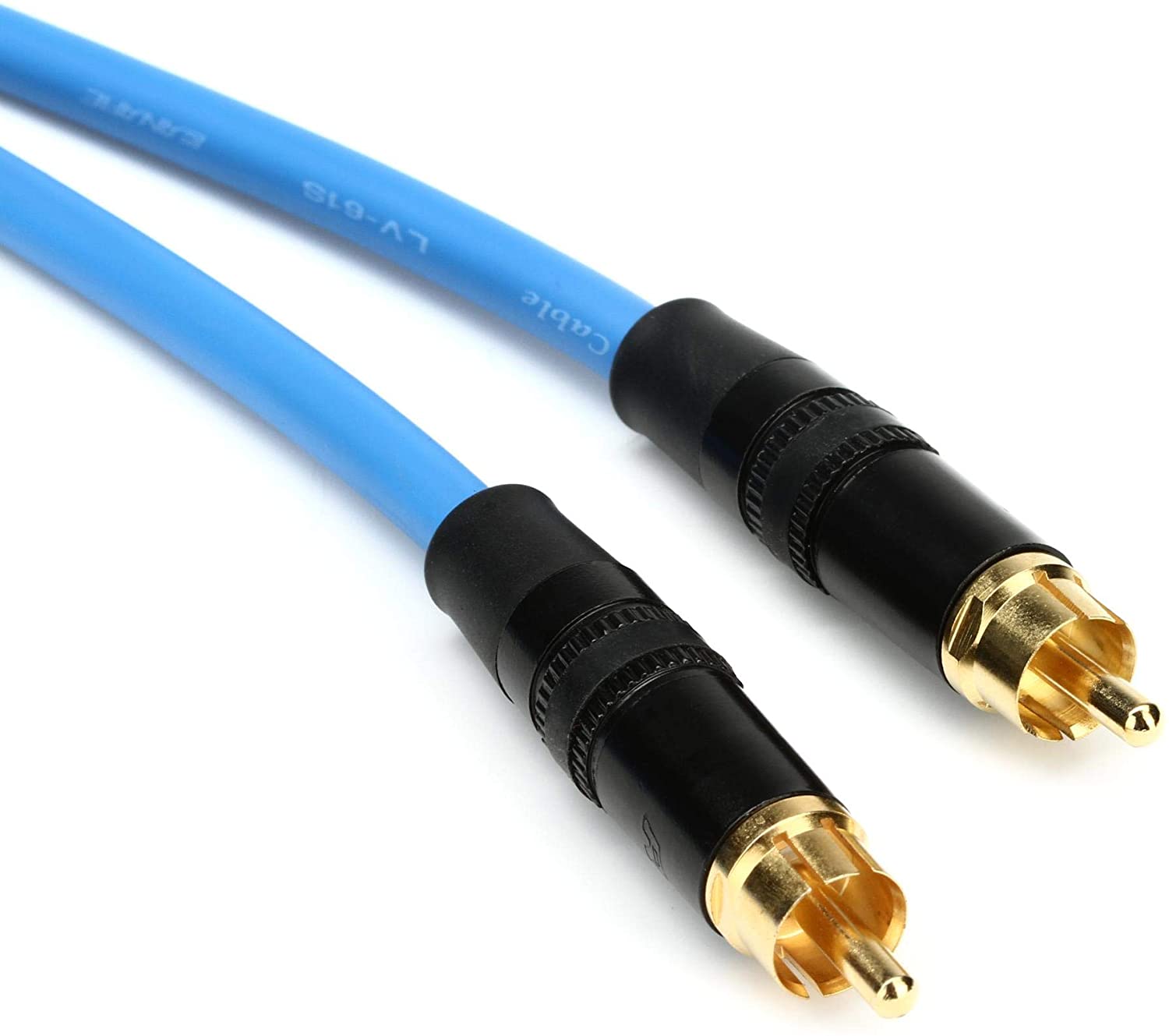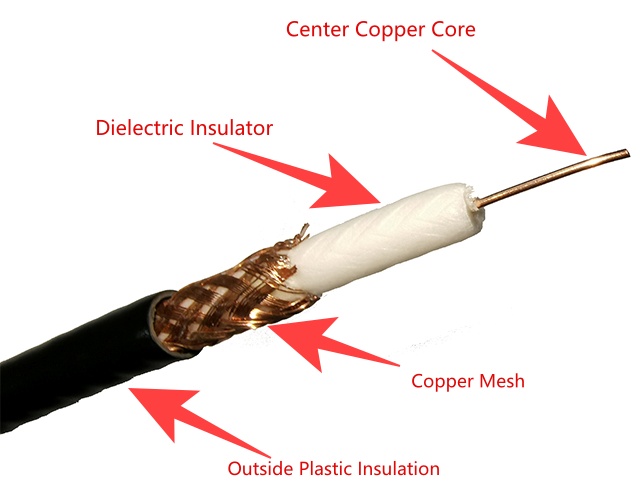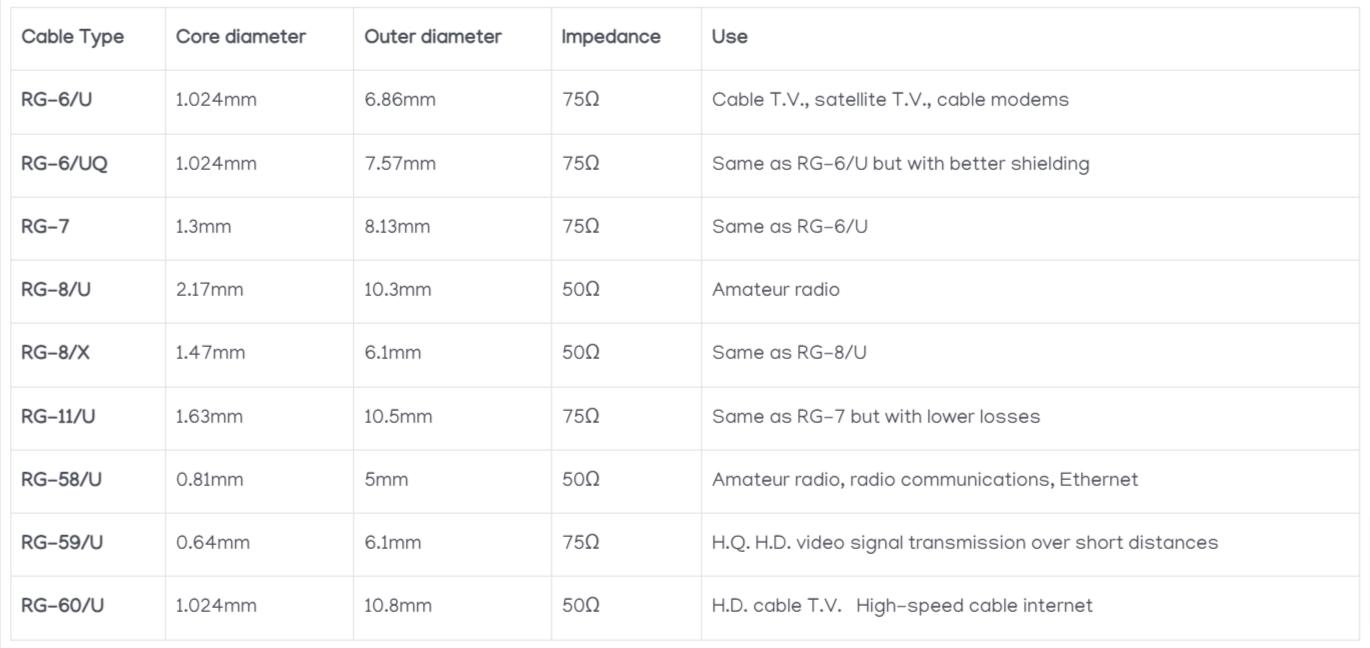Coaxial Speaker Cable ventilated a bright light for all the technology lovers. It enhanced the buoyant spirit of all technicians who work in CCTV, Cable TV, Broadband Service, and other Hardware Services.
Table of Contents
The energy of Technical resonance evaporates a positive flow to navigate a deep ocean of ultimate technological sensuousness with its highest emancipation.
As an experienced Technician, I feel great sensitivity while working with coaxial cable. I will recommend everyone to use this cable as per their necessities, by which you can increase and nourish your difficulties in the modern technological scenario.
Technology evolves, and we do our best to keep our audiences and customers informed. We’ll discuss coaxial cables, varieties of coaxial cables, and how to choose the proper coaxial cable for your project in this post.
Coaxial cables transmit audio and video information and T.V. antennae, modems, cable boxes, and speaker cables.
In this post, we’ll go over the physical and electrical features of coaxial cables, discuss several kinds of coaxial cables, and discuss numerous application situations.

Today’s home entertainment systems feature many ports on the front or rear (and sometimes even both).
On the other hand, coaxial ports will always be present in every device. Many manufacturers and brand makers still accept coaxial cables for different sorts of signal transmission is the primary reason this old but trustworthy connector is still being implemented in newer and contemporary gadgets. As a result, coaxial cables are still valuable for today’s world of electronics and devices.
Keep in mind that the R.F. signal’s range will include both the higher and lower regions of the audio spectrum. This translates to 20kHz (kilohertz) to 300GHz (gigahertz) (gigahertz).
Also See: Best 6 Browsers For Your Roku Device-The Ultimate Guide
As per Wikipedia, The cable was first used in 1858, although it wasn’t patented until 1880, 22 years later. It’s been one of the most prevalent wires in every home since the turn of the century, particularly with the arrival of television.
The coaxial cable has a simple look since it is mostly wrapped in a black plastic insulator layer that feels like leather when handled.
Coaxial Cable Materials
The materials used to construct a coaxial cable are determined by each component.
The central copper rod is often made of copper-plated steel. If the material isn’t available, stranded copper will be used instead.
Solid plastic, foam plastic, or air with spacers are the most prevalent dielectric insulator materials.
A braided copper wire is typically utilized for the shield component of the cable.
A silver-plated braid is used instead in higher-quality and other variants of coaxial cables. Some even combine aluminum foil with braided copper wire to create two shields.
Coaxial cable designs also employ two layers of aluminum foil and braided copper wire as shielding for further protection.
Shielding is used to increase R.F. signal transmission performance while reducing signal loss. The sole disadvantage is that the cable gets thicker and less flexible, which may be a disadvantage for some.

The outer layer of coaxial cable, known as the “jacket,” is generally made of P.V.C. (Polyvinyl Chloride), which is fire-resistant. Some are even resistant to oxidation, U.V. radiation, and water.
Coaxial Cable Types
Like any other equipment or technology, coaxial cables come in various shapes and sizes. The kinds of coaxial cables, on the other hand, are not generally classified since the following parameters may recognize them:
- The cable’s thickness
- The cable’s construction
- The function of the cable
- The cable’s dielectric type.
- The cable’s connector
- The cable’s impedance type
And they are the most typical factors for determining the kind of coaxial cable.
However, when comparing the coaxial cable impedance, it may be cut down to two categories, namely 50 and 75. (the symbol is called ohm).
Coaxial Cables (50)
This cable is often used for radio broadcasts since it works well with various transmitter antennas and radio transmitters.
Coaxial Cables (75)
This cable type is increasingly prevalent in homes, notably for video/audio transmission (television) and telecommunications equipment (landline).
Aside from those two kinds of impedance-type coaxial cables, others, such as 52 and 93, aren’t often utilized.
Coaxial Cables by R.G. Classification
The R.G. (Radio Guide) classification is another technique to determine the kind of coaxial cable.
Though outdated in contemporary technology, this categorization type was initially employed by the military during World War II and is still frequently utilized by many.
It begins with the letters R and G, then a number or pair of numbers (and occasionally a number and letter combination) depending on the kind.
The function of the cable and its properties, such as core wire diameter, outer diameter, impedance, dielectric type and diameter, and shielding type, may all be readily identified using this categorization.
Also See: Mylowesbenefits–All About Mylowes Employee Benefits Program
However, the relevance of this kind of categorization is that it allows one to determine which connector the cable uses for its
connection quickly. The following are the many R.G. categorization types:
Coaxial Cable Connectors are a kind of connector that is used to join two coaxial cables together.
Coaxial cables come with various connections in combination with their R.G. classification type.
The coaxial cable connectors come in different shapes and sizes to accommodate the numerous connecting ports that the cable will be used on. The following are the most often used connectors:
- The BNC connection is an extensively used connector in R.F. and video applications. It can handle frequencies ranging from 4 GHz to 10 GHz.
- N-type connections are utilized for lower microwave frequencies up to 18 GHz and are used in R.F. applications.
- S.M.A. connectors are the most popular form of R.F. connection, ranging from 0 GHz to 24 GHz. Examples are hand-held radio antennas, mobile phone antennas, microwave, and WiFi antennas.
- F-type connections Are the most common connector type, as seen on T.V. and antenna cables. It is capable of handling frequencies of up to 1 GHz.
- R.C.A. connections — used for audio and video communications up to 10 GHz.
A list of the most common varieties of Coaxial Cable and their properties may be seen below

The Advantages and Disadvantages of Using a Coaxial Cable
Today, radio broadcasts, telecommunications, WiFi networks, cable T.V., and cable modems utilize coaxial wires.
Even though it is an outdated technology, it is still used in numerous sectors worldwide for day-to-day labor and operations.
The primary reason for this is that using a coaxial cable has several benefits that outweigh the disadvantages.
Advantages
- A coaxial cable’s first significant benefit is less vulnerable to electromagnetic and radio-frequency interference. Furthermore, the cable supports applications with up to 50 MHz and higher frequencies.
- Coaxial cable has high transfer rates and bandwidth transmission compared to other cables, such as twisted-pair cables. Finally, coaxial cables are pretty inexpensive in today’s market, and their basic architecture makes installation straightforward. Because it is affordable, you can extend it, and it is well-known for its longevity, which is unparalleled among other cables.
Disadvantages
- The first drawback of a coaxial cable is that a single cable failure may pull a network down with it. However, this may be readily remedied by adding a new cable rather than destroying the network or components.
- Another disadvantage of utilizing a coaxial cable is that it must be grounded, which means that a live electric current must pass through it for it to function. Finally, as previously said, the final disadvantage of this kind of cable is that it may be heavy and rigid, making installation difficult.
Frequently Asked Questions (F.A.Q.)
Question: What Is the Best Way to Use Coaxial Cable as a Speaker Wire?
Answer: There are easy steps you may do on your end to convert your present coaxial cable to a useable speaker wire. The following is the first phase in the conversion process:
- Remove the previous connectors.
Most coaxial cables in most homes feature two connections on each end to connect to the source and output device. In this instance, both of them must be removed.
- Measure the length
The average length of typical coaxial cables available today is roughly six feet. Measure the size of the wire you’ll be using to connect your speakers.
- Take off the jacket
To use the coaxial wire as a speaker cable, you need to remove the insulation. A ringing tool or an essential kitchen knife would suffice.
- Unbraiding of the shield
After removing the jacket, gently unbraid the shielding since it will be utilized as wire for your speakers. Take your time.
- Remove the insulator
You’ll need a wire stripper tool for this step since you’ll need to get the core wire inside the insulator.
Question: What is a digital audio cable with a coaxial connector?
Answer: The transmission of audio signals is one of the most prevalent coax cables used. We utilize a coaxial digital audio cable for audio transmission. It’s a standard 75 coax cable with R.C.A. connections, as we’ve previously discussed (it may be A.W.G. 18 like RG-6)
They resemble analog R.C.A. cables, but they are intended to carry a digital signal with a broad frequency spectrum. In addition, you only need one coax audio cable to carry the whole signal.
You’ll need two analog R.C.A. cords (left and right). In addition, digital coax cables have a 75-ohm impedance, while analog R.C.A. cables have a 50-ohm impedance.
Coaxial cables, in general, provide high-quality audio with a simple installation technique and increased bandwidth support.
Question: What’s the difference between a digital optical (TOSLINK) and a coaxial digital audio cable?
Answer: There’s the apparent distinction — they seem to be utterly different. The connections, cable structure, and working principles are all distinct.
Optical cable uses optical fibers (rather than solid copper cores) to transport light rather than electrical messages. The cable sends light pulses from the source device to the destination device.
Aside from the apparent variations, several more significant performance and durability differences are to consider.
The coaxial connection provides a little larger bandwidth and allows for better-quality audio transmission (24bit/192kHz vs. 96kHz). Theoretically, this should result in a better listening experience, but most people won’t notice the change.
Coaxial cables may be utilized over considerably greater distances than optical wires (up to 5m/15ft). Optical cables are significant.
Less resilient than coaxial cables, bending your optical TOSLINK cable might cause harm.
Conclusion
Coaxial cables are ubiquitous in audiophile equipment, including cable boxes, audio, video signal transmission, and speaker cables.
Coaxial cables are the most common kind of transmission cable used in homes and businesses. Whether you need transmission cables for an internet connection, Cable T.V., CCTV cameras, or another device, we have what you need. Coaxial cables will be required for your setup.
Many people gravitate to its usage because of its cost, high-bandwidth transmission, and durability.

